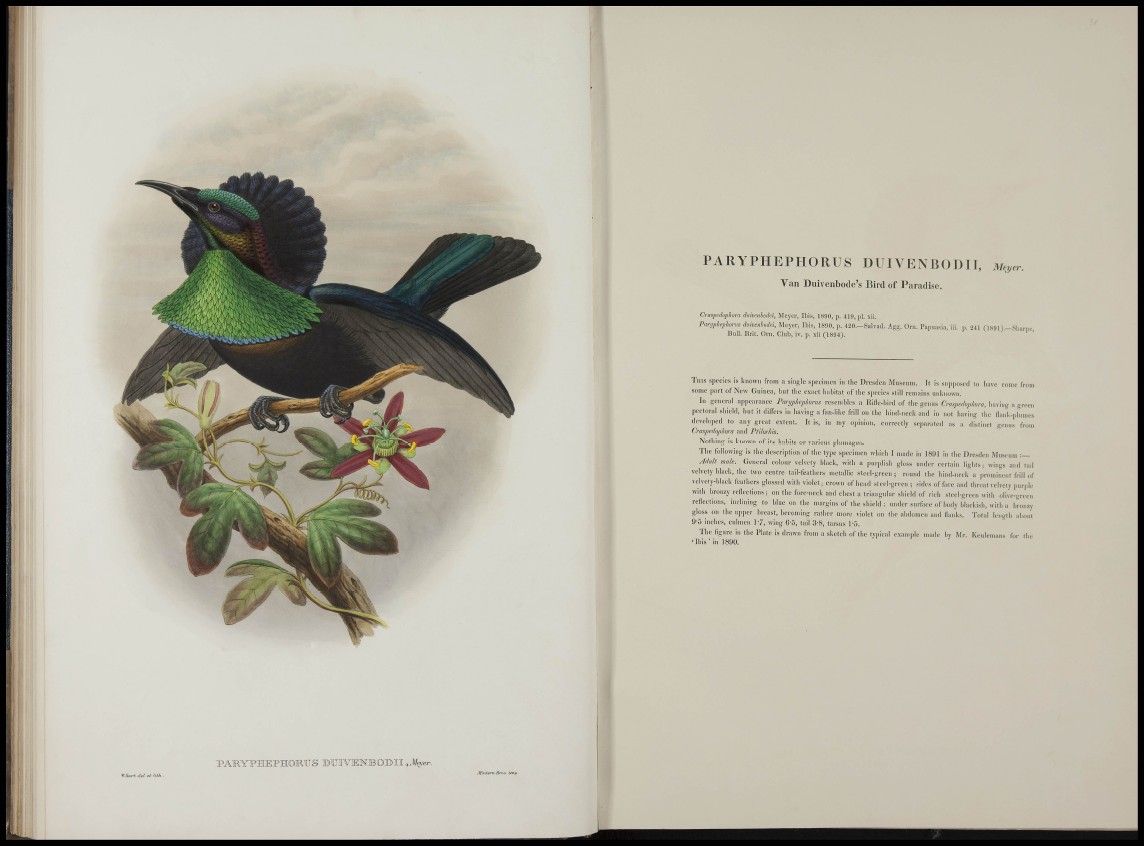
I il
"I
< I'
P A R Y P H E P H O R U S DUIVENBODIT, M^^er.
Van Duivenboile's Bird of Paradise.
Crasfedoplwra dtiiveniodei, Meyer, Ibis, 18B0, p. 419, pi. sii.
Parypltephorus dmvenMei, Meyer, Ibis, 1890, p. 420.—Salvaci. Agg. Orn. Papuasia, iii. p. 341 (1891).-Sliarpc,
Bull. Bi-it. Orn. Club, iv. p. xii (1894).
THIS species is IsiiowTi from a single specimen in the Dresden Miiseinn. It is supposed to liave come fron.
some ])art of Nen- G (iiiicn, but tlic oxHct iicibitcit of tlic s])c'cics still rciiiciiiis imknowi)
In general ai)pcarance Paryplieyhorm resembles a Hide-bird of the genus Craqm/op/iom, having a grceji
pectoral shield, hut it dilTers in having a fan-lil<e frill on the hind-neck and in not having the flank-plurnes
developed to any great extent. It is, in my ojiinion, correctly scjmrated as a distinct genus from
Craspcdophora and PtUor/iis.
Nothing is known of its habits or various ])liimages.
The following is the description of the type specimen which I made in 1801 ¡]i the Dresden Museum : —
Adult male. General colour velvety hlaek, with a purplish gloss inidcr ecrtain lights; wings and tail
velvety black, the two centre tail-feathers metallic steel-green ; round the liind-neek a jirominent frill of
velvety-black feathers glossed with violet; crown of head steel-green ; sides of face and throat velvety purple
with bronzy reflections ; on the fore-neck and chest a triangular shield of rich steel-green with olivc-grccn
reflections, inclining to blue on the margins of the shield ; under surface of body blackish, with a bronzy
gloss on the upper breast, becoming rather more violet OTI the abdomen and flanks. Total length about
9 - 5 inches, culmen 1-7, wing 6-5, tail 3-8, tarsus I'o.
The figure in the Plate is drawn from a sketch of the typical example made by Mr. Keulemaiis for llie
' I b i s ' in 1890.
I r I''
i ' U .
I P A M Y T P H E P H O R U S BUIVENBOB I I
r.fl«^ et (Uh . Jdùxlvrn-¡itxis. im^.